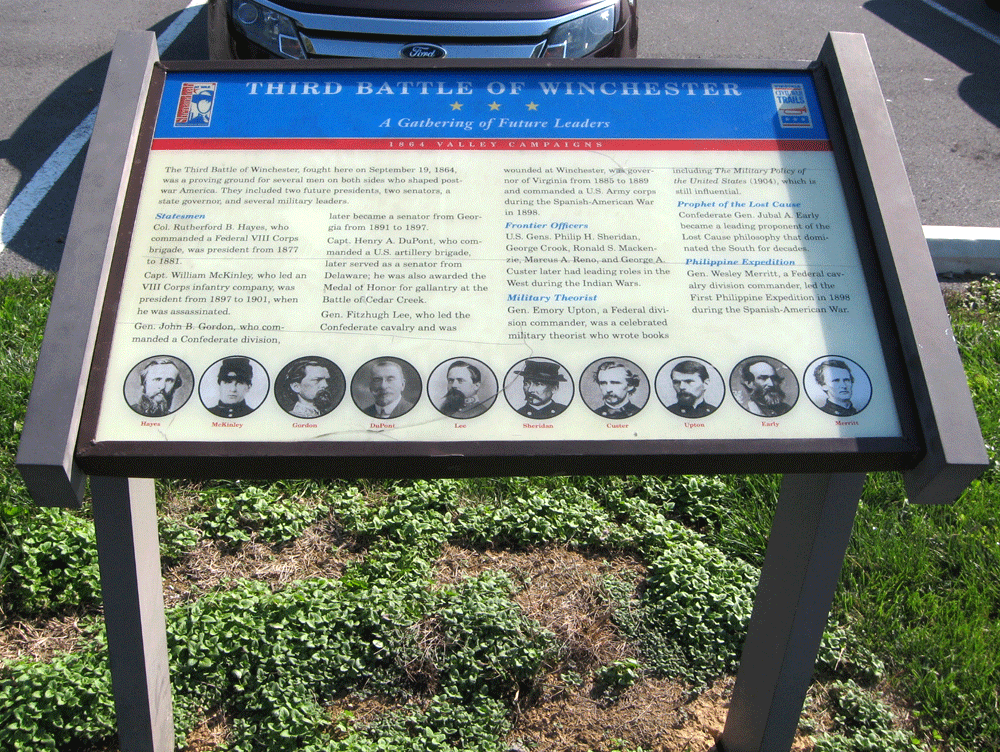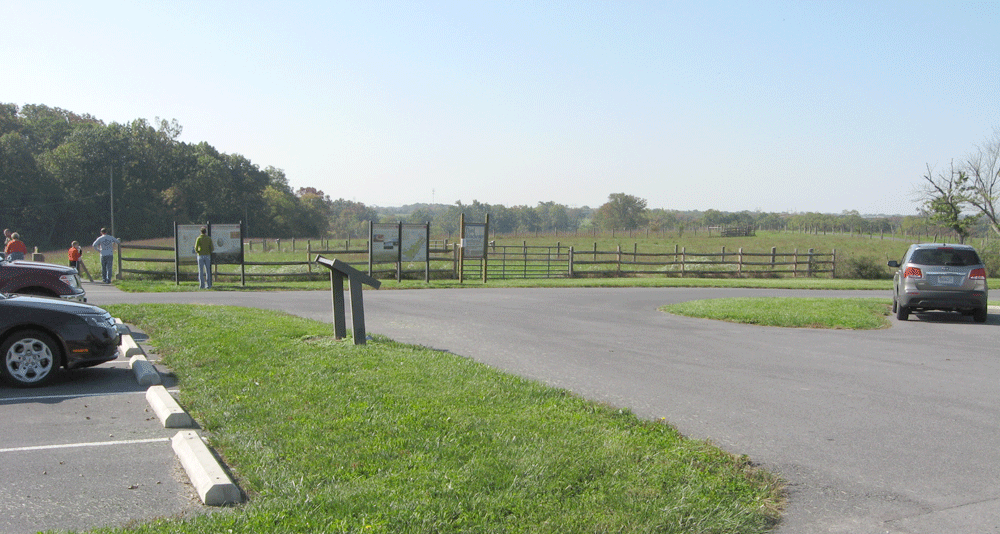3rd Winchester • Tour the Battlefield • Battle Maps • Battle Facts • The Armies
—
Red Bud Run • Star Fort • Fort Collier • Rutherford’s Farm
Stephenson Depot • National Cemetery • Confederate Cemetery
The ‘A Gathering of Future Leaders ‘ wayside marker is in the parking area of the Redbud Road trailhead of the Civil War Trust’s Third Winchester battlefield. (39°12’36.9″N 78°07’38.1″W; see map)

From the marker:
The Third Battle of Winchester
A Gathering of Future Leaders
The Third Battle of Winchester, fought here on September 19, 1864, was a proving ground for several men on both sides who shaped post-war America. They included two future presidents, two senators, a state governor, and several military leaders.
Statesmen
Col. Rutherford B. Hayes, who commanded a Federal VIII Corps brigade, was president from 1877 to 1881.
Capt. William McKinley, who led a VIII Corps infantry company, was president from 1897 to 1901, when he was assassinated.
Gen. John B. Gordon, who commanded a Confederate division, later became a senator from Georgia from 1891 to 1897.
Capt. Henry A. DuPont, who commanded a U.S. artillery brigade, later served as a senator from Delaware; he was also awarded the Medal of Honor for gallantry at the Battle of Cedar Creek.
Gen. Fitzhugh Lee, who led the Confederate cavalry and was wounded at Winchester, was governor of Virginia from 1895 to 1889 and commanded a U.S. Army corps during the Spanish-American War in 1898.
Frontier Officers
U.S. Gens. Philip H. Sheridan, George Crook, Ronald S. Mackenzie, Marcus A. Reno, and George A. Custer later had leading roles in the West during the Indian Wars.
Military Theorist
Gen. Emory Upton, a Federal division commander, was a celebrated military theorist who wrote books including The Military Policy of the United States (1904), which is still influential.
Prophet of the Lost Cause
Confederate Gen. Jubal A. Early became a leading proponent of the Lost Cause philosophy that dominated the South for decades.
Philippine Expidition
Gen. Wesley Merritt, a Federal cavalry division commander, led the First Philippine Expedition in 1898 during the Spanish-American War.

The wayside marker is in the parking lot of the trailhead at Red Bud Run.
